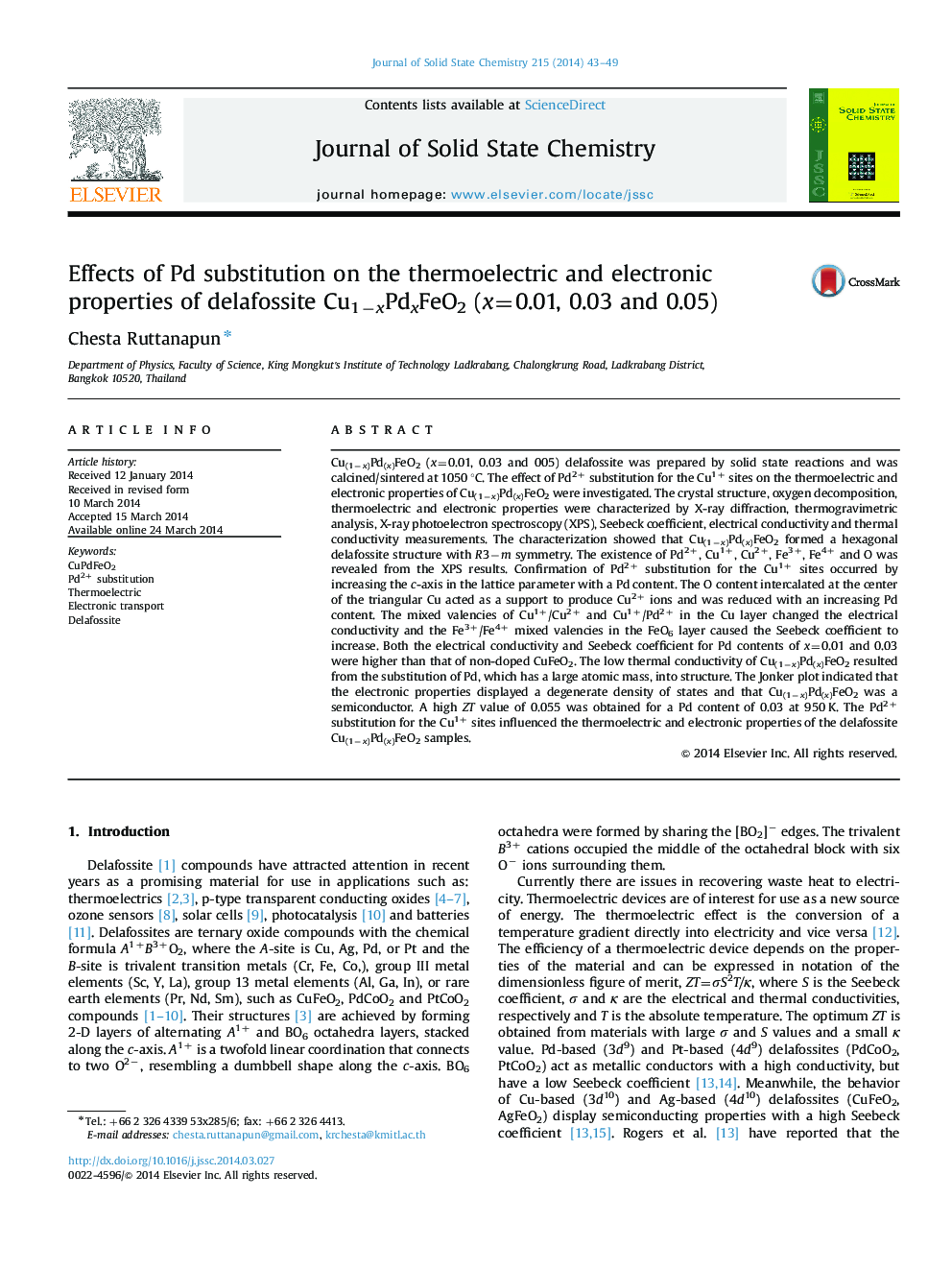| Article ID | Journal | Published Year | Pages | File Type |
|---|---|---|---|---|
| 7758981 | Journal of Solid State Chemistry | 2014 | 7 Pages |
Abstract
Cu(1âx)Pd(x)FeO2 (x=0.01, 0.03 and 005) delafossite was prepared by solid state reactions. The characterization showed that Cu(1âx)Pd(x)FeO2 formed a hexagonal delafossite structure with R3âm symmetry. The existence of Pd2+, Cu1+, Cu2+, Fe3+, Fe4+ and O was revealed from the XPS results. The O content intercalated at the center of the triangular Cu acted as a support to produce Cu2+ ions and was reduced with an increasing Pd content. The mixed valencies of Cu1+/Cu2+ and Cu1+/Pd2+ in the Cu layer changed the electrical conductivity and the Fe3+/Fe4+ mixed valencies in the FeO6 layer caused the Seebeck coefficient to increase. Both the electrical conductivity and Seebeck coefficient for Pd contents of x=0.01 and 0.03 were higher than that of non-doped CuFeO2. The low thermal conductivity of Cu(1âx)Pd(x)FeO2 resulted from the substitution of Pd, which has a large atomic mass, into structure. A high ZT value of 0.055 was obtained for a Pd content of 0.03 at 950Â K. The Pd2+ substitution for the Cu1+ sites influenced the thermoelectric and electronic properties of the delafossite Cu(1âx)Pd(x)FeO2 samples.
Related Topics
Physical Sciences and Engineering
Chemistry
Inorganic Chemistry
Authors
Chesta Ruttanapun,
